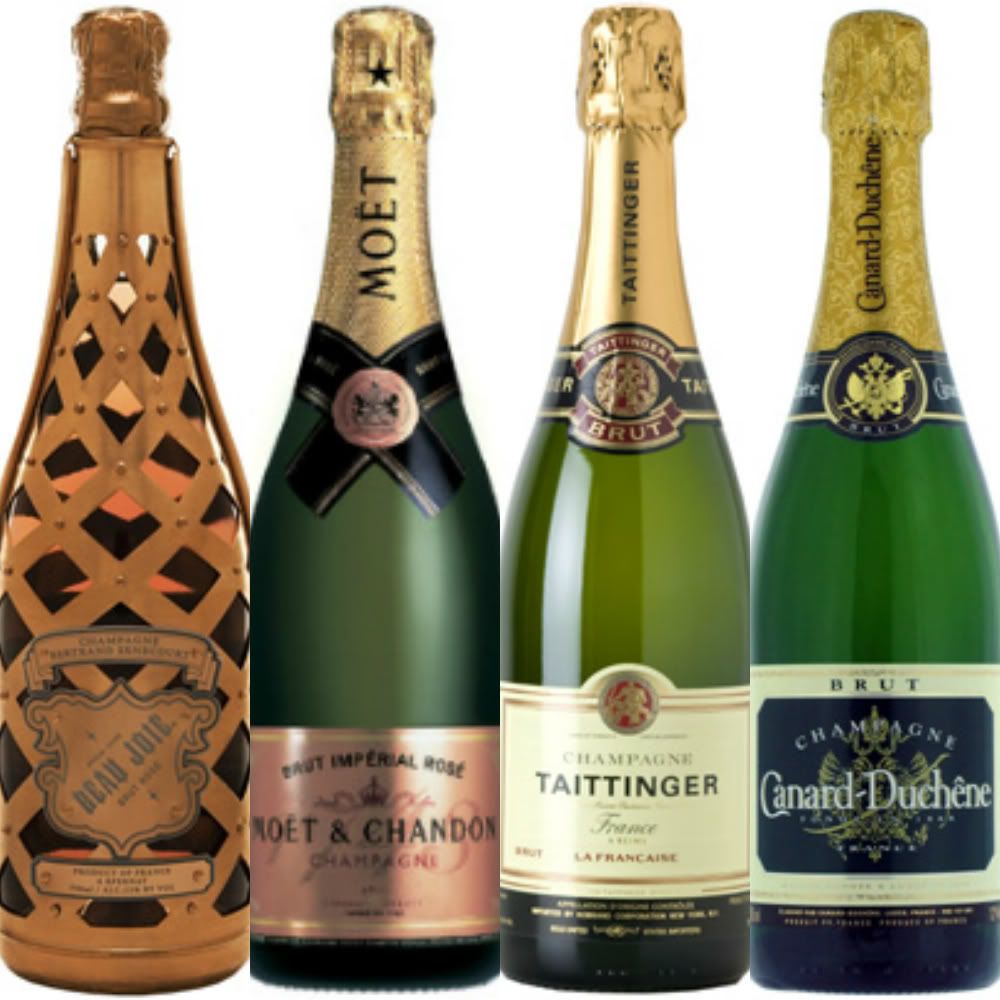
Many people don't realize it, but there is a difference between sparkling wine and real champagne. Champagne is only champagne if it comes from a certain area of France and it actually says "Champagne" on the label.
Beside the fact that Champagne is only made in France, there are other strict guidelines to how Champagne is made.
Unlike most wines, champagne goes through a secondary fermentation process which is done in the bottle. That's what causes natural carbon dioxide gas to get caught inside. This trapped co2 is what causes the bubbles.
Sparkling wines do not go through a secondary fermentation process. Sparkling wine is made from regular wine with co2 injections. This is done the same way as when they make coke or any other type of soda.
But does sparkling wine taste the same as champagne? The answer to this is that they may taste close, but the real difference can be told with a taste test. Champagne is bubblier and a bit lighter and sparkling wines will always carry a taste from the region they are from. Most people tend to prefer the real champagne.
The best way to chill champagne is not in the freezer, but rather in the refrigerator for not more than a couple of days. Better yet, 30 minutes before you are ready to drink the champagne, put it in a champagne cooler that is filled with equal parts ice and water and chill.
When you are ready to open the bottle, make sure that it is always pointed away from yourself and anyone else. To be on the safe side, keep your thumb on top of the cork and with your other hand separate the wire from the bottle. Hold the cork and top part of the bottle firmly in your hand while holding the bottom of the bottle with your other hand. Slowly turn the bottom of the bottle. You do not want the cork to pop, but in case it does and champagne comes pouring out of the bottle do not turn the bottle upright, but rather at an angle which will stop the flow of champagne.
So how do you know what to look for when choosing your champagne? Assess the bubbles. How many are there, how big are they and how fine are the beads? A young champagne will have lots of bubbles where as an older champagne will have less bubbles. Vintage champagne is any champagne that has a date on the label. It means all the grapes were picked in that same year. Non vintage champagne is a mix of various years and a mix of different kinds of grapes.
Labels can tell you more than whether the champagne is a vintage or not. You can also tell how dry the champagne is. For example, "Brut" is the driest of champagnes with almost no residual sugars. Extra Brut, Brut, Extra Dry and Dry are the four different levels of dryness you can get. It can be misleading because by the time you get to "Dry" you are actually drinking champagne which is more on the sweet side.
What type of glass should you use to drink champagne from? It all depends on how many bubbles you want your champagne to have. Narrower glasses or flutes keep the bubbles in the best. If you were to pour champagne from a flute to a martini glass, you would see almost of all the bubbles disappear. But this does not mean your champagne has gone flat. Pour it back into the flute and the bubbles will come back.




